Increased Ranger Patrols in Southeast Madagascar See Major Reduction in Threats for Protected Area
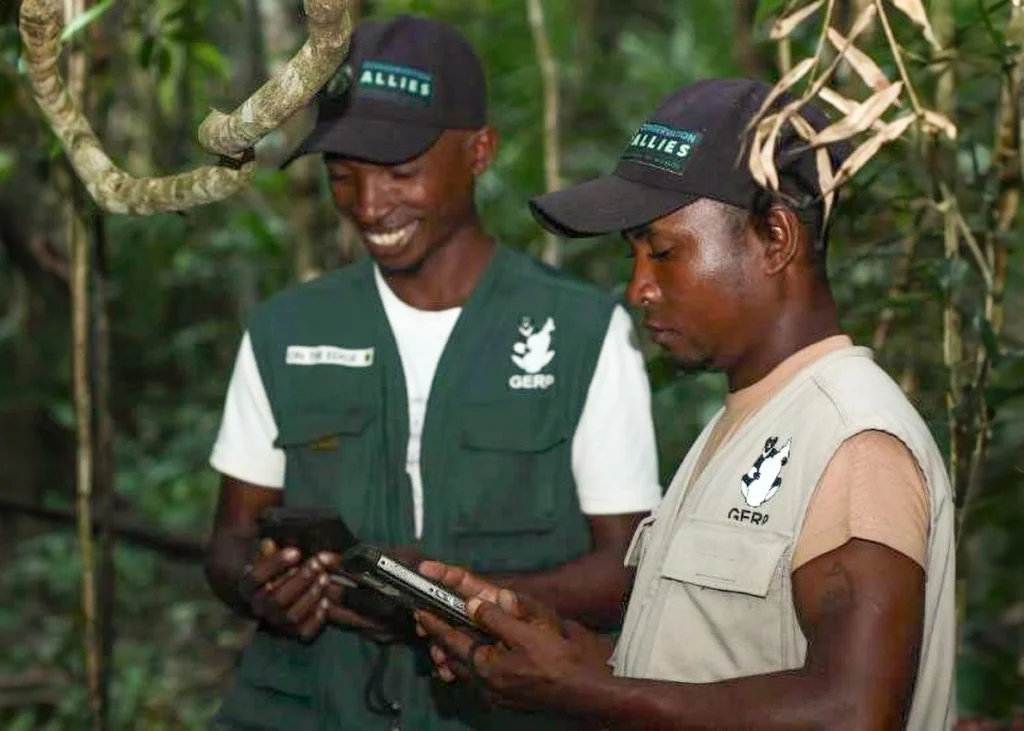
One of those key sites, the 14,331 acre Efatsy Manombo Special Reserve in southeast Madagascar, consists of unique rainforests and is home to seven species of lemurs, including the Critically Endangered Gray-headed lemur and James’ sportive lemur, both of which are found only in this reserve. Almost no native forest survives in this region outside of strictly protected areas, and pressure to clear forests for timber and charcoal is immense. It is imperative that we protect what remains. With the 2023 dry season from July to December bringing heightened risks of fires and deforestation, Conservation Allies provided a Conservation Action grant to GERP to increase patrols in Efatsy Manombo Special Reserve. GERP was able to scale their efforts, with seven equipped patrol teams covering over 1,450 miles in the most high-risk areas. Their goal was to prevent imminent threats and apprehend perpetrators undertaking destructive activities. Importantly, GERP documented a steep decline in pressure in 2023 as compared to previous years. For example, in 2022 they documented 133 illegal charcoal kilns, while only 74 were observed in 2023. Additionally, illegal logging violations dropped by 400%, with only 64 cases and a total of 6.42 acres cleared in 2023 (17 times lower than the 111.2 acres cleared in 2022). The sharp reduction in threats demonstrates that increased Reserve protection through patrolling teams working with law enforcement works to save wildlife in the face of even the greatest challenges. We are proud to support the work that the GERP team is doing to conserve the biodiversity of Madagascar. Featured photos are property of GERP
New Bird Species Found in Colombia’s Cloud Forests: Discovery of the El Dorado Antipitta
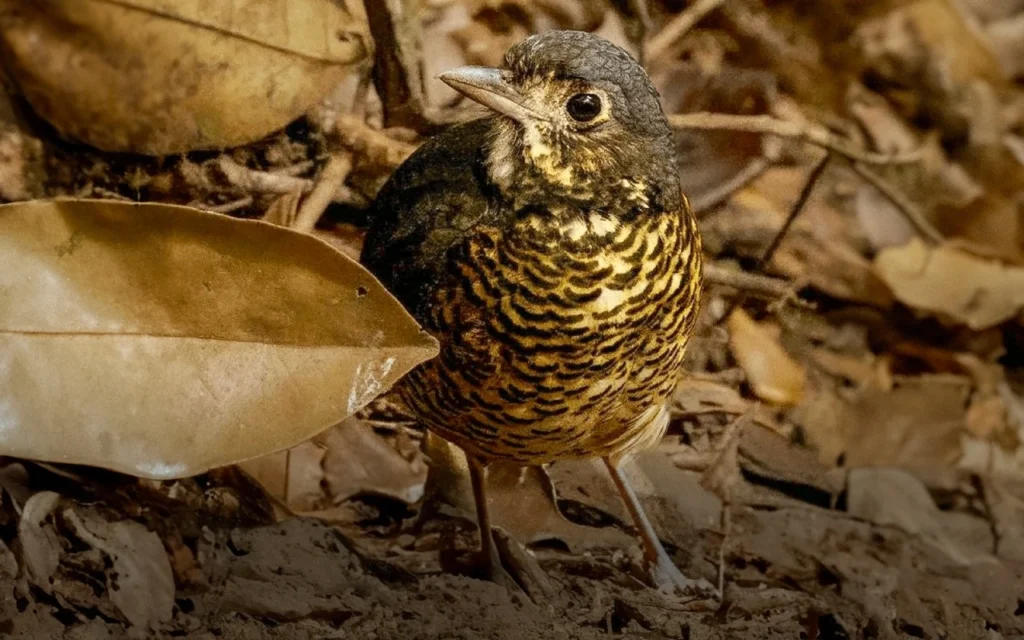
“This truly is a remarkable species discovery, not only because this large terrestrial bird eluded thousands of birders and ornithologists for decades, but that it further accentuates the global importance of the El Dorado ProAves Reserve and nearby pockets of surviving natural forest that are the last sanctuaries for this species and so many other endemic and endangered species.” Paul Salaman, President of Conservation Allies It is extremely rare to find a new species of bird nowadays. Just three new species were described globally in 2023. Colombia is the world’s #1 country for birds with over 1,979 bird species recorded, and yet, new species can still be found there. This exciting discovery further highlights the global importance of the 3,200 acre El Dorado ProAves Reserve for biodiversity conservation. With support from Conservation Allies, ProAves protects over 20 endemic bird species and hundreds of other species of amphibians, orchids, and reptiles restricted to the subtropical and montane forests of the reserve and the Sierra Nevada de Santa Marta mountain range. Alongside the atmosphere of celebration, there are valid concerns about the future of the El Dorado antpitta. The bird’s habitat is currently threatened by deforestation, made worse as climate change drives people to seek refuge from hotter areas of the country. The discovery of the El Dorado antpitta emphasizes the crucial role of protected areas like the El Dorado ProAves Reserve in preserving Comobia’s biodiversity, much of which is still unknown.
These researchers had to swim through rivers to protect Peru’s biodiversity
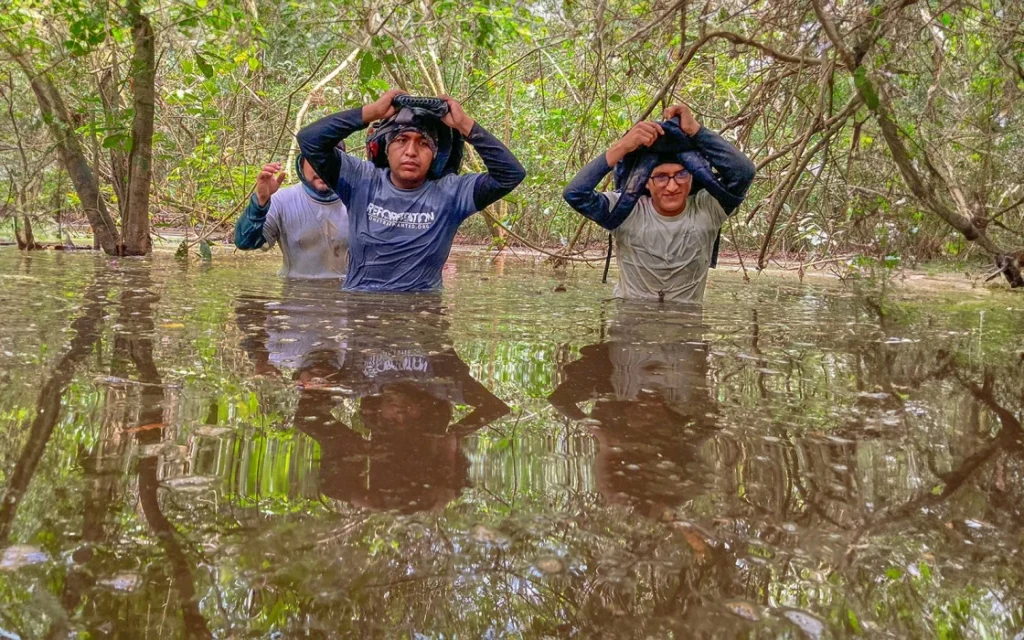
In the dense jungles of the Peruvian Amazon, conservation efforts often face challenges as diverse as the biomes they work to protect. Conservation Allies partner, Kawsay Biological Station, is a Peruvian biodiversity conservation non profit, situated in the buffer zone around the Tambopata National Reserve, that specializes in Spider monkey research. Small, local nonprofits like Kawsay often find themselves underfunded, navigating treacherous landscapes, both literal and financial, in their work to protect their region’s wildlife. They must compete with large, internationally recognized conservation organizations for support— an ongoing uphill battle. However, the story of Kawsay is a testament to the transformative power of adequate support and funding. Imagine researchers having to swim across a raging river, their equipment precariously balanced on their backs, just to access vital research and patrol areas. This was the reality for the dedicated team at Kawsay Biological Station until August 2023, when a grant from Conservation Allies made it possible to construct a bridge spanning the river. Construction of the bridge was recently completed, allowing Kawsay staff and volunteers to cross the river safely so they monitor wildlife and carry out essential conservation activities without risking their lives. Moreover, the construction of a workstation (also funded by a grant from Conservation Allies) near the research area has been a game-changer for Kawsay. Previously, researchers had to trek nearly 4 miles back to the main station at night and return to the research site the next morning. This logistical challenge consumed valuable time and limited the effectiveness of their patrols and research efforts. With the new workstation in place, equipped to store essential gear and provide shelter for researchers, Kawsay has significantly increased its operational efficiency. Researchers can now spend the night closer to the field site, maximizing their presence in the area and enhancing their ability to detect and respond to threats such as hunting and logging activities. The impact of these infrastructural improvements extends far beyond convenience. By enabling Kawsay to operate more effectively in the field, the grant has improved scientific understanding of the wildlife of the region, which will better future conservation strategies for animals such as the Endangered Black spider monkey. This success story underscores the importance of supporting lesser-known, but highly effective, conservation non profits like Kawsay Biological Station. By providing them with the resources they need to overcome challenges and realize their vision, we can play a vital role in preserving our planet’s biodiversity for future generations.
After Missing For Over A Century, This Friendly Mammal Has Been Rediscovered
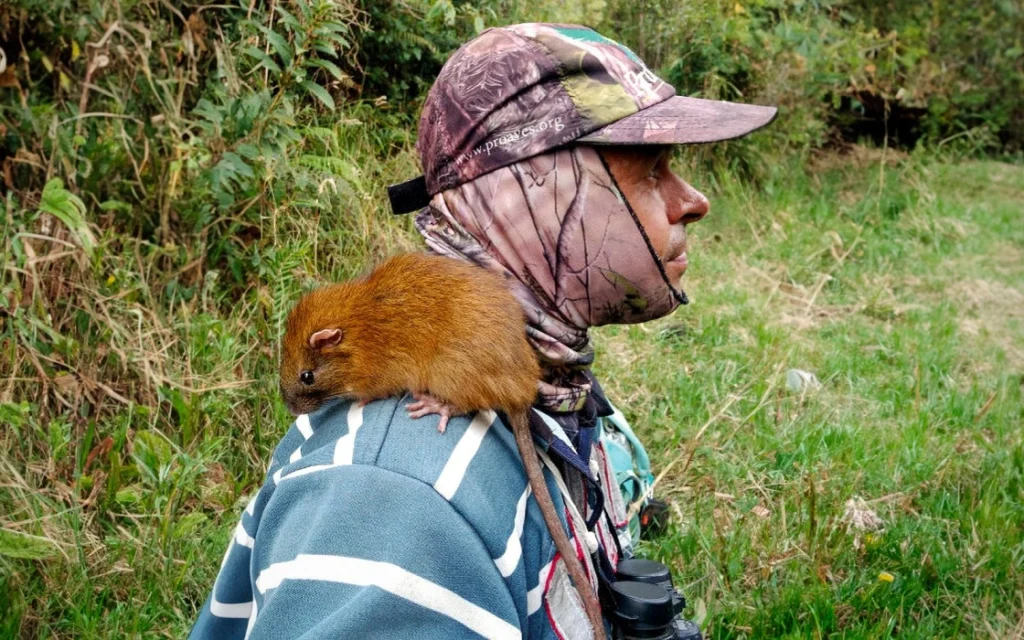
The Colombian Bamboo Toro, also known as the White-tailed olalla rat, was first described in 1879. For nearly 150 years it has remained elusive, with only 17 records from the Colombia Andes and a solitary record from Ecuador. Its enigmatic nature has shrouded it in mystery, with limited information available about its behavior and habitat. However, the recent encounter by Sergio Cruz, a ranger for Conservation Allies partner ProAves Foundation, has provided a rare glimpse into the world of this elusive creature. “I was undertaking surveys in the reserve when, around 2 pm at 3,430 meters elevation, I saw this mammal down the trail feeding on bamboo and grass,” recounts Sergio Cruz. “Little by little, I got closer and closer. It showed absolutely no concern for me, and despite its large size and being a wild animal, it let me take photos until it actually came to me and climbed on me! You cannot imagine my surprise and joy!“ Sergio Cruz, ProAves Foundation Ranger The Colombian Bamboo Toro is characterized by its distinctive features, including soft, long hair and an exceptionally long tail with a bold whitish tip. Its bright reddish-brown body contrasts with a whitish belly, making it a striking presence amidst the lush landscape of the Andes. Despite its rarity, this remarkable mammal has forged an unexpected bond with humans, offering hope for its conservation. Small mammals play a crucial role in maintaining the delicate balance of ecosystems. As seed dispersers, pollinators, and prey for larger predators, they contribute to the health and stability of their habitats. The Colombian Bamboo Toro, with its specialized diet and habitat preferences, occupies a unique niche within the Andean cloud forest ecosystem. The fondness of the Colombian Bamboo Toro for bamboo thickets within high Andean cloud forests highlights the ecological importance of these habitats. However, these fragile ecosystems face mounting threats from clearance for farming and the impacts of climate change. By safeguarding the Colombian Bamboo Toro and its habitat, we can protect not only a single species but an entire ecosystem teeming with life. The rediscovery of the Colombian Bamboo Toro underscores the critical need for conservation action. ProAves Foundation, in collaboration with Conservation Allies, is committed to studying this remarkable species to assess its population and implement effective conservation strategies. By leveraging scientific research, community engagement, and habitat protection initiatives, we can ensure the survival of the Colombian Bamboo Toro and other endangered species. The Loro CoroniAzul ProAves Reserve, where the rediscovery took place, holds significant importance as an Alliance for Zero Extinction site for the Critically Endangered Fuertes’s Parrot. This designation signifies its global significance for endangered species and habitats, emphasizing the need for continual and intensive conservation efforts in the region. Just 13 miles northeast of the this reserve and the Colombia Bamboo Toro sighting, in the same high Andean cloud forest, Conservation Allies is continuing to support ProAves in their work of building a major new ecolodge at the Loro Fuertesi ProAves Reserve, which will provide easier access and is fast becoming a popular destination to see the spectacular Fuertes’s Parrot.
Igniting Change: Saving Madagascar’s Ankarafantsika National Park
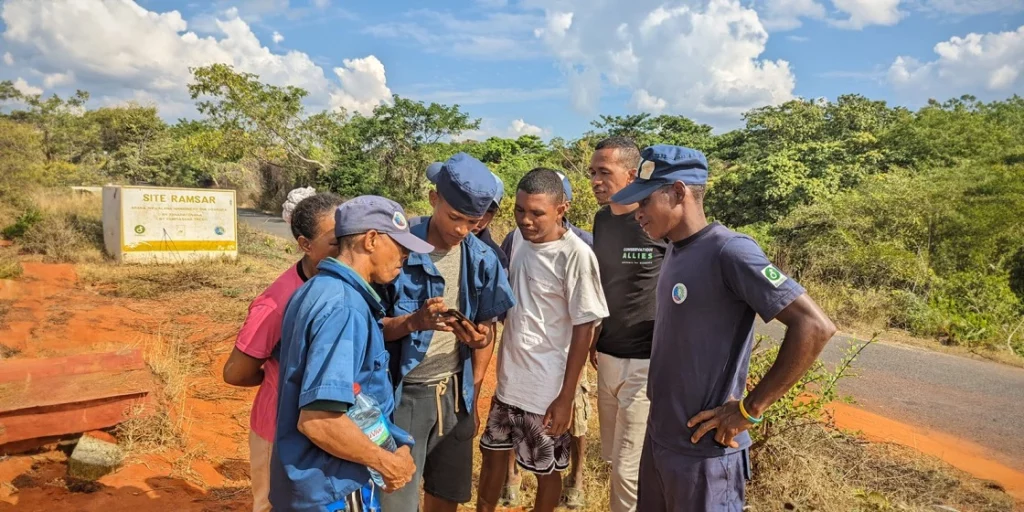
Ankarafantsika National Park has long suffered from rampant wildfires (started by humans), selective logging, illegal palm frond collecting, and agricultural expansion. It is home to hundreds of endemic and threatened species, including the Critically Endangered Coquerel’s Sifaka. Amidst the pressures faced by Ankarafantsika’s wildlife, collaborative efforts between FOSA and key organizations including Madagascar National Park (MNP), Durrell Wildlife Conservation Trust , and Planet Madagascar have begun yielding promising results for forest conservation of the area. This collaborative approach ensures a comprehensive and multi-faceted strategy to address the diverse array of threats facing Ankarafantsika’s forests. FOSA’s origins are forged from 25 years of research and conservation efforts by the local community around Ankarafantsika National Park under the guidance of Distinguished Professor Luke Dollar of Catawba College, and with the support of Conservation Allies. FOSA is driven by local residents who care about their National Park, showcasing a unique blend of grassroots activism, science-based conservation actions, and strategic partnerships. FOSA originally focused on research and monitoring of the unique and highly threatened Fossa (locally known as “Fosa”) which is the largest mammalian carnivore on Madagascar and looks like a small cougar, led by Prof. Dollar. The association has expanded its scope to incorporate research, education, and patrols, including the establishment of women’s associations, a notable inclusion in Madagascar’s conservation landscape. With a primary emphasis on wildlife conservation, FOSA collaborates closely with MNP to combat threats such as forest fires, illegal logging, and habitat destruction. Their approach is characterized by intimate knowledge of the land, proactive patrolling efforts, youth engagement, and community outreach initiatives. Utilizing new technologies, including conservation drones and real-time satellite reports of deforestation and fires, FOSA and Conservation Allies staff identified the origin of wildfires that were ravaging the area. By using data analysis to improve patrol techniques, FOSA has been able to identify and apprehend more illegal activities within the Ankarafantsika, leading to significant progress in curtailing logging, wildlife poaching, and other abuses of nature. FOSA has led a majority of the forest patrols in Ankarafantsika since 2022, positioning them as the major force defending the National Park. The effectiveness of FOSA’s forest patrols has greatly strengthened protective efforts of the Park and assisted MNP and other entities. FOSA’s nimbleness and community-led approach have enabled them to overcome challenges, allowing them to make swift and tangible progress in Ankarafantsika’s forest conservation. A notable shift observed in 2023 was the growing sense of respect local community members showed towards FOSA’s forest patrol teams. Their work has fostered a sense of ownership and responsibility among locals for forest conservation. Additionally, the simple fact that FOSA is present in the area has begun to noticeably deter people from engaging in illegal activities that previously often went unchecked. FOSA has become an example of what a community-based approach to conservation can achieve for National Parks. Their work has encouraged collaboration amongst other conservation non profits, innovation, and community engagement to safeguard the precious forest ecosystem of Ankarafantsika for future generations. By building on the successes of FOSA, Ankarafantsika stands poised to serve as a beacon of hope and resilience in the global fight for forest conservation.
Preserving Paradise: New Protection for Colombia’s Enigmatic Yellow-eared parrot

At the beginning of the twentieth century, the Yellow-eared Parrot thrived across the Colombian Andes. However, by the 1980s, relentless hunting and the logging of Quindío Wax Palms, the parrots’ primary habitat, for Palm Sunday rituals had brought both the parrot and the palm to the brink of extinction. In fact, the parrot was thought to be extinct until 1999, when ProAves Foundation launched an emergency campaign, led by Conservation Allies President Paul Salaman, to locate and protect any remaining Yellow-eared Parrot population. Their discovery of the last remaining flock in Roncesvalles, Tolima, marked the beginning of a concerted effort to address threats and bolster the population, which had dwindled to just 81 individuals. Central to the species’ recovery was the acquisition of private cattle farms in the parrot’s core breeding area. Establishing a protected sanctuary ensured safe nesting and breeding grounds, crucial for population growth. Recognizing the importance of this sanctuary, the regional environmental corporation CORTOLIMA declared the 11,406-acre area as the Loros Andinos Regional Natural Park, formally protecting the unique cloud forest and alpine tundra habitats in the Colombian Andes. The declaration of the Loros Andinos Regional Natural Park was made possible through collaboration with various organizations, including Conservation International, American Bird Conservancy, and ASOCARS. This milestone sets the stage for further declarations of ProAves Natural Reserves, crucial for protecting Colombia’s rich biodiversity. “ProAves is immensely proud to have helped CORTOLIMA declare the Loros Andinos Regional Natural Park on 26th December 2023 that safeguards the Quindío Wax Palm and the site that ensured the survival of the wonderful Yellow-eared Parrot. After 25 years, the Yellow-eared Parrot population exceeds 3,500 individuals and thanks to this Park today, this parrot is no longer considered at risk of extinction.” Sara Inés, Executive Director of ProAves Foundation In addition to the Yellow-eared Parrot, the park also safeguards habitat for other threatened species, including Fuertes’s Parrot, the Rufous-fronted Parakeet, the Golden-plumed Parakeet, and the Rusty-faced Parrot. Additionally, it preserves a diverse range of flora and fauna endemic to Colombia’s Central Cordillera. Over the past 25 years, the ProAves team faced numerous challenges and tragedies in their work to protect the Yellow-eared parrot, including the loss of ranger Gonzalo Cardonas, who was murdered defending the species. In light of such sacrifices, the permanent protection of the Loros Andinos Regional Natural Park stands as a beacon of hope in the fight to conserve endangered species. In a time where many species face uncertain futures, the recovery of the Yellow-eared Parrot in Colombia serves as a testament to the impact of dedicated conservation efforts. The establishment of the Loros Andinos Regional Natural Park highlights the potential to make a difference in preserving biodiversity, even in the face of great adversity.
The Crucial Role of Wildlife and Biodiversity in Mitigating Climate Change

According to a recent study, conserving biodiversity around the world leads to enhanced natural carbon capture and storage through supercharging ecosystem carbon sinks. The study found that protecting certain wild species could equate to 6.41 billion tons of additional carbon dioxide being captured per year. This alone would bring us 95% of the way to meeting the Paris Agreement targets of removing enough carbon dioxide from the atmosphere to keep global warming levels below the critical 1.5-degree Celsius threshold. Traditionally, the mindset has been to protect wild animals from human impacts and climate change, often leading to separate climate and biodiversity conservation spaces. It is time for a paradigm shift, where we view wild animals as functionally interdependent with ecosystems and perhaps the greatest warriors in the fight against catastrophic climate change. Madagascar has been devastated by rapid deforestation and biodiversity loss. In a unique reforestation project, our partner Madagascar Biodiversity Partnership has been collecting tree seeds from the droppings of Critically Endangered Black-and-white ruffed lemurs after discovering that these seeds had higher survival rates than “unfertilized” seeds. Additionally, by planting more of the trees that lemurs show a preference for, they are restoring forests that are extra lemur-friendly, creating a regenerative natural cycle that benefits both wildlife and the climate. Similarly, in the Amazon, extensive tree clearance for agriculture, ranching, and wood and paper production has led to the degradation and devastation of forests. An unexpected ally in the task of forest rehabilitation? Tapir dung. Tapirs inhabit regions of the Amazon requiring urgent reforestation as they actually prefer to forage in degraded forests over healthier habitats. Feeding on herbs, shrubs, and nutrient-rich leaves, tapirs unintentionally sow seeds in their excrement, effectively reforesting previously burned or deforested Amazon landscapes. As elephants walk through habitats, they inadvertently tread on small invasive plant species, stomping them out and creating favorable conditions for the growth of large trees that, in turn, store significant amounts of carbon. Beyond this, elephants play a crucial role in supporting biodiversity by aiding in seed dispersal and enriching the soil with nutrients through their dung. The absence of elephant disturbance in Africa’s rainforest would result in a seven percent reduction in its carbon storage capacity. In fact, the disappearance of elephants would mean the loss of approximately three billion tons of carbon storage. Research suggests that each living elephant contributes more than $1.75 million worth of carbon-capturing services. On average, each great whale sequesters 33 tons of carbon throughout its lifetime. In the natural course of their life cycle, deceased whales contribute to the ocean’s carbon sequestration by transforming into sediment that nourishes the sea floor. Premature deaths of whales, whether due to commercial whaling, boat strikes, or other causes, deprive the ocean of a significant tool for carbon sequestration, reducing not only the deceased whales environmental impact, but also its potential future offspring’s. Phytoplankton play a crucial role in capturing approximately 40% of the global carbon dioxide produced. As whales migrate across the oceans, they leave behind waste rich in iron and nitrogen. This waste fosters an optimal environment for phytoplankton growth, contributing to a healthy ecosystem and aiding in the regulation of our climate. These are just a few examples of the ways in which wildlife contribute hugely to protecting the Earth’s climate. Through our work with conservation partners in the planet’s most threatened biodiversity hotspots, we are protecting hundreds of species and restoring millions of acres of critical wildlife habitat, leading to a healthier climate and a wilder world.
The Boy Who Traded His Gun For A Camera

In the heart of Colombia’s Department of Córdoba, there is a boy named Diego Andrés Polo Martínez, fondly known as Dieguito.
Reflecting on the Biodiversity Wins of 2023

If we were to sum up 2023 in a single word, it would be growth. Despite being a small (and passionate!) team, we were able to make a substantial impact on biodiversity conservation worldwide, with projects stretching from Latin America to Madagascar, all thanks to your support. Our commitment to safeguarding biodiversity drives every action we take. The recent soaring inflation rates have significantly affected donations to wildlife, creating a financial hurdle that jeopardizes our efforts to protect and preserve our planet’s diverse ecosystems. With your continued support, we can navigate these turbulent times and ensure a sustainable future for our planet. Your donation, no matter the size, will make a tangible difference in our fight to save the world’s most threatened biodiversity. We protect over 12 million acres of natural habitat in Madagascar and Latin America We support 26 Conservation Partners in the Global South (+ will be expanding in 2024!) Our board members cover our administrative costs, so 100% of your donation goes to conservation December 31st is the last day to have your donation doubled by our board members! Working with 26 Partners, this year’s stories of success are too many to list in a single article, so we’ll start by highlighting a few. In 2015, they were successful in making much of the frog’s habitat a legally Protected Area. With continued protection, the Golden mantella frog has begun to recover and is now listed as Endangered (rather than Critically Endangered). Plus, they have already cultivated 18,500 more seedling trees to start out 2024 strong. Through intensive community-based conservation, this chronically exploited biodiversity hotspot saw a five-fold decrease in deforestation in 2023, against all odds (read more…). Your dedication to nature this year made a real impact for biodiversity worldwide. Stay tuned to our email newsletter for our 2023 Impact Report, coming soon! Thank you for your unwavering support. We sincerely cherish your commitment to wildlife and wish you a fantastic New Year ahead.
Against all odds, deforestation in Madagascar’s Menabe Antimena is coming to a halt
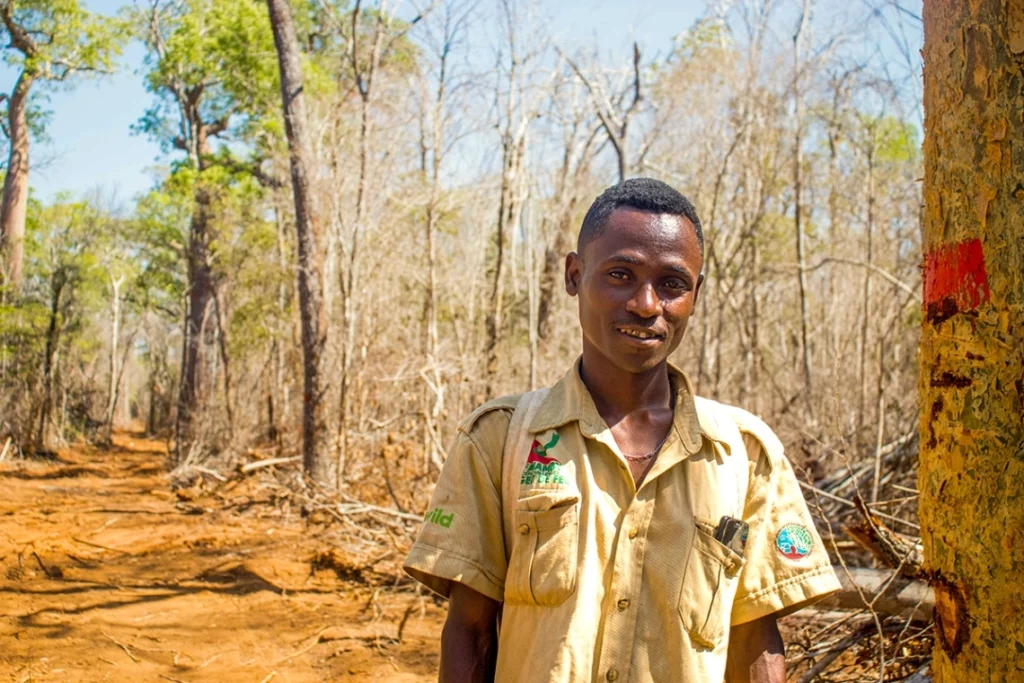
Despite its legally protected status, Menabe Antimena has suffered tremendous losses from illegal logging and the converting of its forests into agricultural farmland. Since 2001, deforestation rates skyrocketed year after year, reaching over 6.5% annual losses between 2017-19. By 2020, only one quarter of Menabe Antimena’s forests remained, and scientists predicted that nothing would remain of Menabe Antimena by 2035. In 2020, Conservation Allies, in collaboration with our Malagasy Partner, Association Fanamby, initiated intensified protective measures by employing Green Brigades— patrols staffed with rangers and law enforcement officers. We accelerated protective efforts and sustainable livelihood projects (alongside Hempel Foundation, FAPBM, and USAID) within the surrounding local community. These intensified conservation efforts paid off, with annual deforestation decreasing almost five-fold down to 1.4% between 2020-22, a notoriously difficult period for conservation due to the global pandemic. 2023 was expected to be the most challenging year, with tumultuous national elections and an El Nino event that increased the likelihood of fires and drought. Bracing for the worst, we supported Association Fanamby in facilitating even more Green Brigades to further expand strict enforcement of conservation laws in the Protected Area. As we end 2023, we are thrilled to report that these efforts have been immensely successful, with an overall deforestation rate of just 0.1%— the lowest ever. 2023’s encouraging results stand as an example, highlighting the ability of strong, community-based protective measures alongside local livelihood support to dramatically reverse habitat loss. This positive outcome is thanks to our many Conservation Allies supporters that have allowed us to expand protection in Menabe Antimena, an area of global biodiversity importance. We will continue to sustain Green Brigades and aim to further expand protections in 2024.


